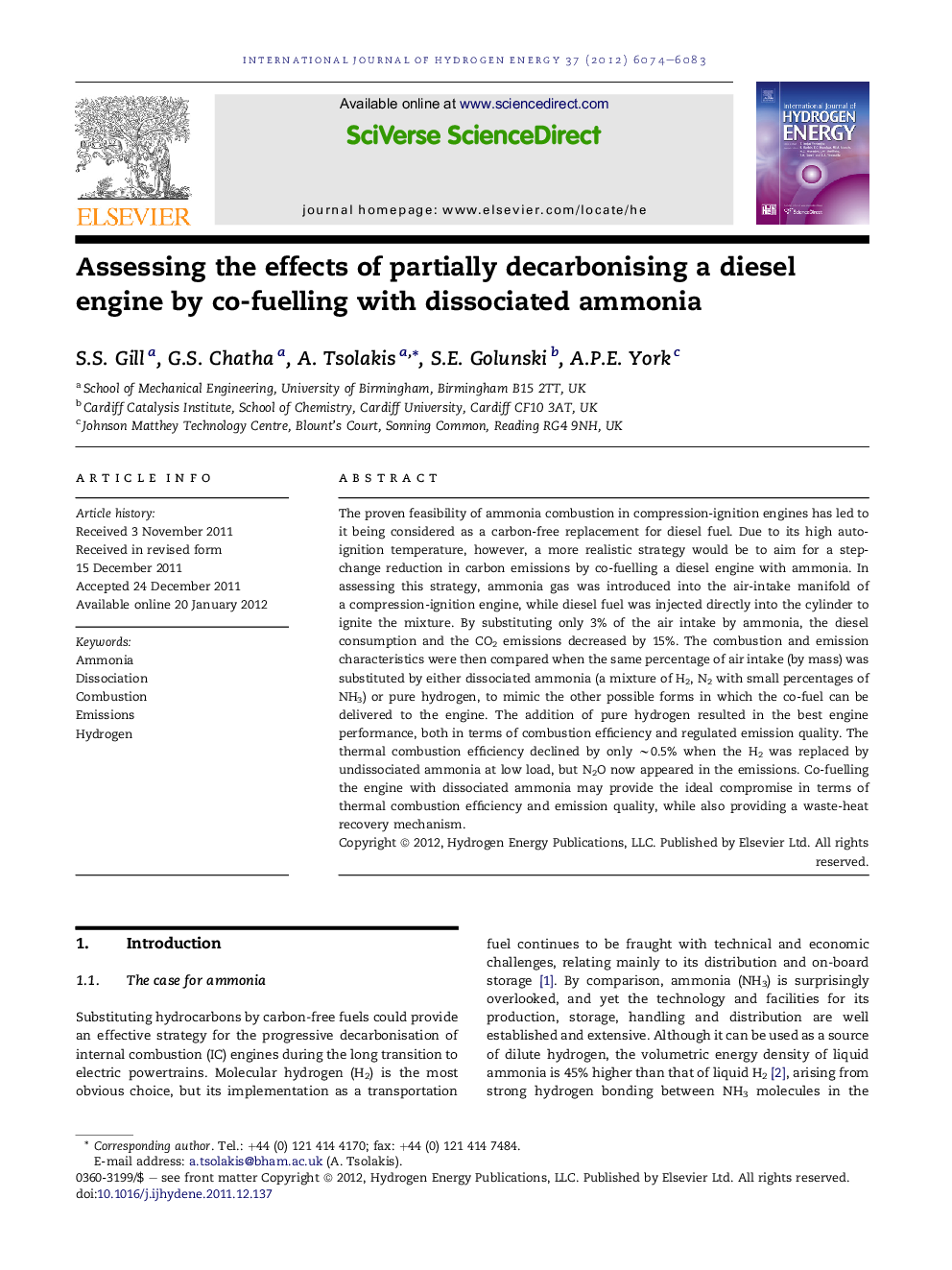| Article ID | Journal | Published Year | Pages | File Type |
|---|---|---|---|---|
| 1276899 | International Journal of Hydrogen Energy | 2012 | 10 Pages |
The proven feasibility of ammonia combustion in compression-ignition engines has led to it being considered as a carbon-free replacement for diesel fuel. Due to its high auto-ignition temperature, however, a more realistic strategy would be to aim for a step-change reduction in carbon emissions by co-fuelling a diesel engine with ammonia. In assessing this strategy, ammonia gas was introduced into the air-intake manifold of a compression-ignition engine, while diesel fuel was injected directly into the cylinder to ignite the mixture. By substituting only 3% of the air intake by ammonia, the diesel consumption and the CO2 emissions decreased by 15%. The combustion and emission characteristics were then compared when the same percentage of air intake (by mass) was substituted by either dissociated ammonia (a mixture of H2, N2 with small percentages of NH3) or pure hydrogen, to mimic the other possible forms in which the co-fuel can be delivered to the engine. The addition of pure hydrogen resulted in the best engine performance, both in terms of combustion efficiency and regulated emission quality. The thermal combustion efficiency declined by only ∼0.5% when the H2 was replaced by undissociated ammonia at low load, but N2O now appeared in the emissions. Co-fuelling the engine with dissociated ammonia may provide the ideal compromise in terms of thermal combustion efficiency and emission quality, while also providing a waste-heat recovery mechanism.
► Co-fuelling a CI engine with ammonia is an efficient way of reducing CO2 emissions. ► NH3 is a H2 carrier and can be dissociated using exhaust waste-heat recovery. ► Using dissociated NH3 minimises NH3 slip and N2O formation during combustion. ► Dissociating NH3 provides the ideal compromise for thermal efficiency and emissions.
